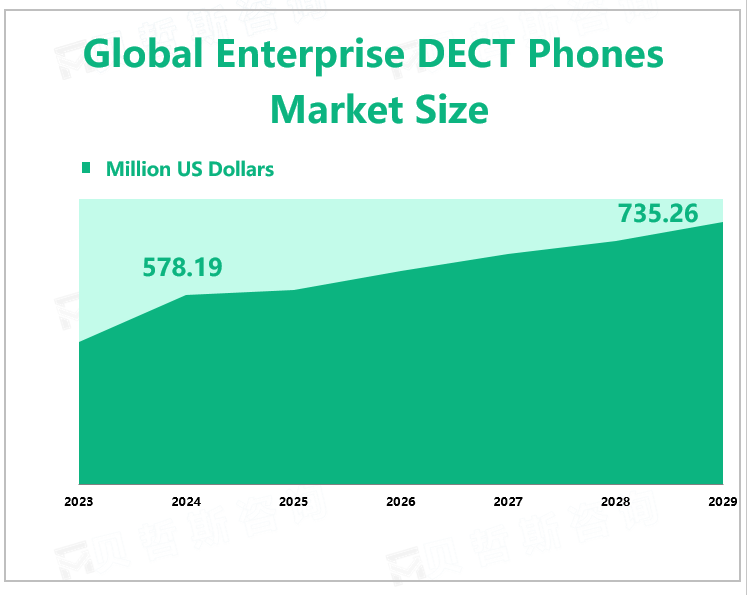Global Enterprise DECT Phones Market Overview
According to Global Monitor, the global enterprise DECT phones market size is $578.19 million in 2024 and is expected to grow to $735.26 million by 2029.
Digital Enhanced Cordless Communication (DECT) is a well-known wireless communication technology that enables communication between base stations and mobile phones. The technology can be used at distances of up to 500 meters between cell phones and base stations while reducing signal interference, enhancing security, and better audio quality. DECT handsets offer many advantages over standard cellular devices, including reduced power requirements, high reliability, secure and uninterrupted communication services, and other value-added features. In addition, DECT supports PSTN (Public Switched Telephone Network) and VOIP (Voice over Internet Protocol) telephony, as well as networking and data applications.
Intense Competition in the Market
A variety of mature international brands, domestic brands, and new entrants have formed a competitive landscape. Key players continue to seek market expansion through continuous strategic mergers and acquisitions, innovation, increasing R&D investment, and cost-effective product mix. Due to the existence of several major manufacturers, the competition in the enterprise DECT phones market is fierce.

Drivers
Digital enhanced cordless telecommunications (DECT) phones, especially in the corporate world, have stood the test of time and the challenges posed by many other enterprise mobile communications technologies. Compared with traditional cordless phones, the advantages of DECT phones, such as higher security, mobility, excellent voice quality, reduced signal interference to other electronic and wireless devices, and a variety of value-added features make this communication device an essential part of the company's technological development. In most industrial sectors around the world, company competition is becoming increasingly fierce, driving the business case for improving corporate mobility, which in turn has driven the growth of DECT phones.
Large Investment in Development and Strict Technical Requirements
Due to the limited development funds and the technology of the product's main control chip, it has been mastered by other manufacturers. To some extent, it restricts the development of manufacturers of Enterprise DECT Phones industry.
Changes in radio frequency regulations will restrict the development of the DECT industry. For example, North America has derived DECT 6.0 due to the restrictions of the United States radio frequency regulations. It uses slightly different frequency ranges. Although the technology is almost the same, the frequency differences make compatible systems impossible. Use in other regions cannot be avoided even by the same manufacturer.
|
By Type |
SIP DECT |
|
IP DECT |
|
|
The IP DECT segment holds the largest market share. |
|
|
By Application |
Healthcare |
|
Retail |
|
|
Manufacturing |
|
|
Hospitality |
|
|
Others |
|
|
The healthcare segment occupies the biggest share. |
We provide more professional and intelligent market reports to complement your business decisions.